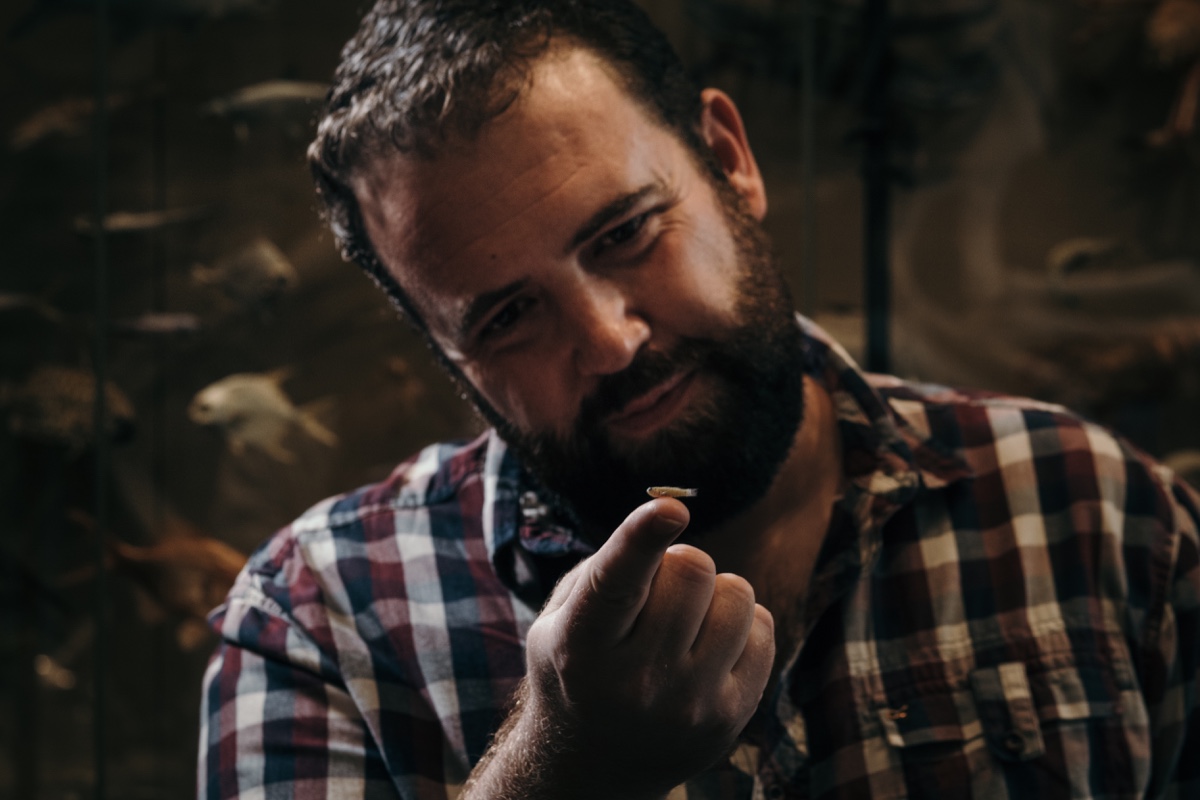The world's coral reefs, some of our most dazzling and diverse ecosystems, are built literally on the bodies of tiny fish, new research has established.
A multinational team of researchers, including University of New England (UNE) postdoctoral research fellow Dr Chris Goatley, have taken a close look at cryptobenthic fish – most of them so small they are never seen by divers – and found they are crucially important to the functioning of coral reefs.
"Cryptobenthic fish account for less than 6% of the total mass of the fish on the reef, yet they provide about 60% of the fish tissue consumed by reef predators," Dr Goatley said.
"These are some of the smallest vertebrates on the planet. Many of these species never get longer than 20mm, and around a thousand of these little fish would only weigh as much as an Australian dollar coin."
"Few live longer than a year, and some live only eight weeks. And they don't tend to die of old age: up to 8% of all individuals in some species may be eaten every day."
But cryptobenthic fish (meaning camouflaged, living close to the seafloor) are the insects of the reef: they exploit every conceivable niche, and help to consume the waste organic matter that falls down into their miniature habitats.
Because the "cryptos" are then themselves rapidly eaten by species further up the food chain, the researchers have recognised them as an essential link in cycling nutrients upward, back into the more visible aspects of the reef ecosystem.
This clarifies one of the ecological puzzles about coral reefs.
These reefs are all photogenically located in dazzlingly clear waters - which indicate that the water is carrying little in the way of floating nutrients. How do these extraordinarily rich ecosystems flourish in what are essentially marine deserts?
Dr Goatley and his colleagues propose that the frenetic insect-like life-and-death cycles of the cryptobenthic fishes are key: by eating the reef's organic waste, and then being eaten themselves, they help to keep energy and nutrients cycling within coral reef ecosystems. Reefs don’t need much nutrient from external sources, because these internal recycling systems are so efficient.
These conclusions were reached after several years of research sparked by a conversation between Dr Goatley and two of his co-authors on a bench in a marina in Tahiti, where they were attending a conference.
Reflecting on some of the gaps in knowledge about reef function, and how little was known about the cryptos, the scientists resolved to enquire further.
Their modelling of the role of cryptobenthic fishes in reef energy cycles, and of the highly adapted breeding cycles that allows cryptobenthic fishes to flourish against considerable odds, was published today in the top-rated journal Science.
Dr Goatley said the evolving understanding of cryptobenthic fishes is helping them become recognised as ‘canaries in the coal mine’ for the world's ailing reefs – potential indicators of whether a reef is in decline long before larger species show ill-effects.
When a reef is sick or dying, Dr Goatley said, the cryptos seem to remain in their usual numbers, but different species proliferate on reefs with dying or dead coral, compared to those with healthy coral.
Because these tiny fish breed and die in such short cycles, a population shift occurs far more quickly than it does in the larger reef fish, many of which can live for 40 years, and some even up to 80 years.
"By the time we realise these larger fish are struggling to maintain their populations, the reef might be already badly degraded," Dr Goatley said. "The cryptobenthic fish populations are affected by changes on the reef within months."
"As our reefs come under stress from climate change and pollution, we need to gain a better understanding of these rapid indicators of change – especially as they are fundamental to the healthy functioning of reefs."
- Demographic dynamics of the smallest marine vertebrates fuel coral reef ecosystem functioning: Brandl et al. To be published online by the journal Science at 4am, Friday, 24 May 2019. https://science.sciencemag.org/cgi/doi/10.1126/science.aav3384.


